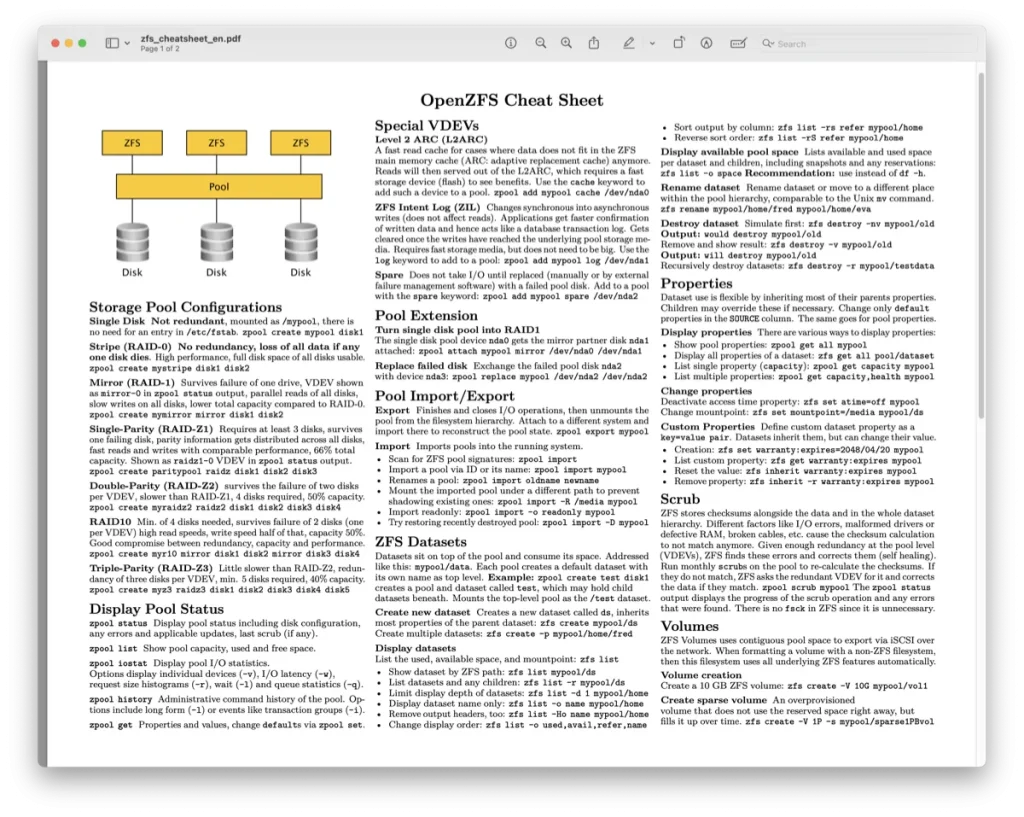April 3, 2025
OpenZFS provides a lot of enterprise storage features in FreeBSD and other systems. Developed and actively maintained by a worldwide open source community, OpenZFS receives new features, updates, and bug fixes regularly.
Companies and users alike rely on OpenZFS for its rock-solid stability, data integrity, feature-set, and cost effectiveness. OpenZFS maintains its own documentation as online help, man pages, and a comprehensive website. Beginners may still feel overwhelmed using OpenZFS for the first time. Understanding ZFS terminology like clones, deduplication, triple-parity RAID, scrub, volumes and snapshot holds before using it in production settings is highly recommended. After all, you’re storing your valuable data on ZFS and want to access it reliably with high performance. Both beginners and seasoned storage admins may need to look up ZFS features they want to deploy or what options to use in a certain situation.
To help use OpenZFS, we created an OpenZFS cheat sheet that contains the most common features in a concise form. In the cheat sheet you’ll find:
- basics like creating a storage pool
- various RAID configurations
- how to display status information
- importing and exporting pools
- datasets and their properties,
- scrub operation and maintenance
- creating ZFS volumes
- snapshots and clones
- dataset encryption to keep your data safe from prying eyes
- delegating administrative functionality
- sending and receiving snapshots over the network
Print this cheat sheet on a single page (front and back) and fold it left and right of the middle column. You’ll have a short flyer-like piece of paper ready to look up the most important concepts!
You can download the cheat sheet here.
Have a suggestion for improvement? Let us know or send a pull request 😊

